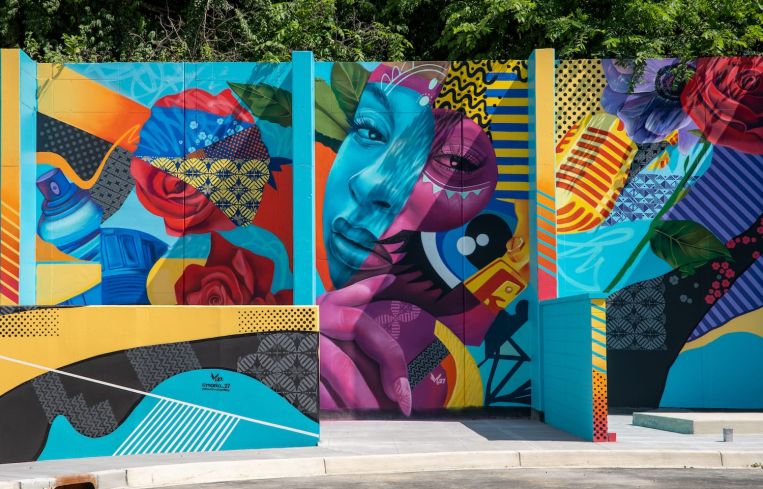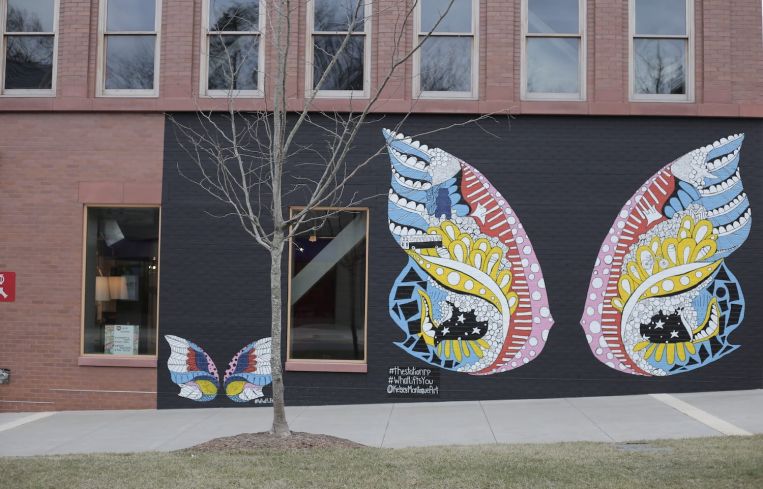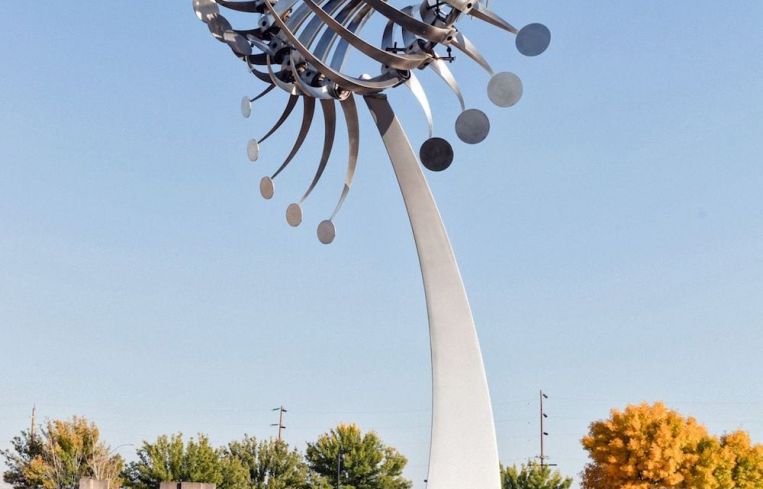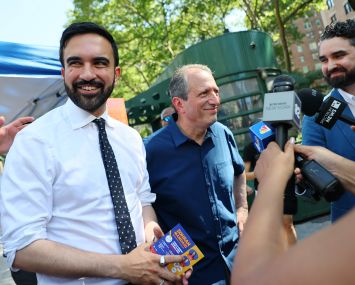DC Developers Double Down On the Power — and PR Potential — of Art
Art has been a key feature in development for many years, but the investment and emphasis on public art is a rapidly growing trend across the D.C. market right now
By Keith Loria July 9, 2021 4:09 pm
reprints



It isn’t enough for developers to just make pretty buildings anymore; to be truly engaged and seen as community builders, many developers say they find it wise to invest in public art projects that are in line with the communities that surround their projects.
That’s why many developers in the Washington region are now incorporating paintings, sculptures and other art installations in their projects.
Here is a look at some recent projects in the region utilizing art.
City Homes
Grosvenor Americas has always had a deep commitment to patronizing local artists and, over the last decade, has contributed more than $500,000 to local artists in D.C. through its development projects.
“We’re seeing a lot more interest in art right now in the multifamily space, as well as in commercial and office,” Ryan Stewart, Grosvenor Americas’ senior development manager, told Commercial Observer. “People are gravitating toward things that feel authentic, and these pieces really feel that way — they stand out and provide something pure and true that someone put their blood, sweat and tears into.”
It’s newest development, City Homes, a townhome community in D.C.’s historic Eckington neighborhood, includes a creative art walk experience within the unit corridors featuring three seven-piece original collections by local artists Caitlin Teal Price, Julie Wolfe and Steven Cushner.
“This area has a deep artistic history, and we have partnered closely with local artisans to curate art for the space,” Stewart said. “We decided to make a large investment in order to feature art in the corridors, because we really wanted to recognize the artisan members of our community and applaud their contributions to Eckington and D.C. as a whole.”
Another art piece in the region that Grosvenor Americas is proud of is Crossroads, a 30-foot-tall, stainless-steel sculpture at Central, an apartment community in Silver Spring, Md.
“It’s a beautiful reminder of consequential decision making. Importantly, this piece is a part of the public realm and is meant for all community members to enjoy,” Stewart said. “For us, our investment in public art boils down to creating a healthy environment. We know that experiencing true artwork is good for mental health — it challenges our thoughts and makes us look at things differently. It also brings us moments of joy in the day we otherwise wouldn’t have. We really see these art pieces as extensions of our goal to create strong, vibrant, lasting communities.”
Bryant Street
Bryant Street is a new development in D.C.’s Edgewood neighborhood, offering apartments, retail and public spaces. Developer MRP Realty has taken specific care to understand the community it is entering and has invested more than $75,000 in local artists’ work, honoring the community’s history, both inside the building and outside in public art spaces.
“From a residential perspective, we know there is only so much we can do within the units themselves, so we are always looking for what else we can do,” Matt Bailey, development manager of MRP Realty, told CO. “In the past couple years, it seemed like we were in an amenity race to build the biggest gym, pool or lobby, but now we are seeing the prioritization of public art space as the ultimate community amenity.
“Amongst developers here, we are seeing an arts race of sorts,” he added. “Developers are pushing each other to incorporate dynamic art concepts from local and unique artists into their developments.”
The first residential building in Bryant Street, Coda, has more than 2,300 square feet of local art in five murals, and, overall, artists have created more than 5,000 square feet of art throughout Bryant Street.
“Much of the inspiration for the designs came from the existing community murals on the site. We wanted to be sure any public art was a true value-add and an authentic reflection of the community,” Bailey said. “For Bryant Street, community-curated art has been a great avenue to connect with the community. In fact, there were some existing murals commissioned years ago that we wanted to add to when we entered the space. We commissioned local artists to create complementary murals that connect the neighborhood to its history and future.”
Inside the buildings, MRP Reality has also incorporated the work of local artists that feature subjects that speak to the narrative of the neighborhood.
“We’ve found that public art generates a lot more interest in a development and helps add to the personality of those projects within their neighborhoods,” Bailey said. “It helps elevate and complement our architectural designs, both on the interiors as well as exterior, and we’ve found that residents really appreciate and value consciously created art installations in the place they call home.”
The Station at Riverdale Park
Calvin Cafritz Enterprises.continues to develop The Station at Riverdale Park, a 36-acre development in Prince George’s County that, when completed, will feature 119 townhouses, 850 multifamily units, 160,000 square feet of retail and 20,000 square feet of office. The active mixed-use community also includes art from all over the world, which is featured throughout the property for the public to enjoy.
“As the DMV area continues to reopen, residents and visitors will continue to look for beautiful, relaxing spaces to spend time outdoors with friends and family, and many of those spaces will revolve around art,” Jane Cafritz told CO. “Art can be intimidating for many of us, making the artistic process feel out of reach. By putting curated works out in the open, it creates new energy, and inspires creativity and an appreciation for the arts within a community.”
The area includes a wing mural by renowned artist Kelsey Montague, known for her Taylor Swift-inspired mural in Nashville; and “The Soul of Words I and II” sculptures by Spanish sculptor and artist, Jaume Plensa.
“Art, like the pieces featured at The Station, can help add character and beauty to the spaces they inhabit,” Cafritz said. “Some, like our Riverdale Engineering Research Corporation plane from 1946, can be a beautiful nod to the neighborhood’s history. And others, like ‘Sir Rulean’ by Kim In Tae, can be a symbol for gathering at Bear Square — The Station’s central meeting point, with family and food-oriented programming, that brings the community together throughout the year.”
The Redevelopment of Downtown Columbia, including the Merriweather District Neighborhood
In 2010, The Howard County Council in Maryland adopted the Downtown Columbia Plan to guide the redevelopment of the center core of the city, calling for works of art to be incorporated into new amenity spaces and private developments, and suggesting that “the walls of buildings and parking garages could become the surfaces” for works of art.
“People today — everyone from CEOs to young adults joining the workforce and young families — are looking for an urban core within a community offering an active, outdoor lifestyle,” Greg Fitchitt, president of the Columbia region for The Howard Hughes Corporation, which is developing the area, told CO. “Public art, and the arts in general, have always been central to the vision and appeal of Downtown Columbia, notable for its natural, open setting and progressive institutions.”
Merriweather District is the first ground-up development in the Downtown Columbia Plan, and is envisioned as a regional hub for culture and commerce. Once completed, Merriweather District will include 4.9 million square feet of mixed-use development, including public spaces, residential, office, and varied street retail.
“One of our team’s early investments was “Azlon”, one of the largest kinetic sculptures in the state of Maryland, by internationally renowned artist Anthony Howe,” said Vanessa Rodriguez, vice president of marketing for The Howard Hughes Corporation. “Azlon presents a slow-motion dance of steel and light at such a large scale that it can mesmerize viewers for long, extended moments. When the wind is calm, the sculpture’s 22 finely balanced, curving wings remain perfectly still, but a breeze sets them into a majestic, spiraling vortex.”
HHC also commissioned Vicki Scuri Siteworks to create “Rainbow Sunset”, a dramatic graphic installation on the north and west sites of the parking garage for One Merriweather, the first building developed in the Meriweather District. Inspired by what Scuri has described as “the warm hues of Maryland’s sunsets”, the work interacts with sunlight, creating changing shades of color.
“As an arts activist, I have enjoyed seeing how this region continues to embrace the powerful role that the arts can play in shaping communities,” Rodriguez said. “Especially now, as we emerge from the pandemic, people are reconsidering just how important art can be in activating the public realm and ensuring the success of development by creating vibrant public experiences.”
Keith Loria can be reached at kloria@commercialobserver.com


